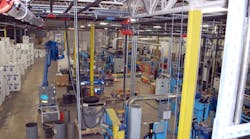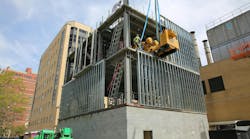Picture this repair scenario. Bob gets a call from an operator that a palletizer stopped running. Because product is backing up on the conveyor system, operators are setting product on the floor.
Arriving in his red cape and boots, Bob uses his X-ray vision and finds the culprit (actually, he uses his DMM). It’s a blown fuse in the palletizer control cabinet. Bob doesn’t find any obvious cause (e.g., a short in the circuit). He decides to just replace the fuse. He pulls the fuse, and 25 minutes later is back from his round trip to the tool crib (where the attendant required time to identify the correct replacement). Total repair time: 47 minutes.
Let’s change some details. Bob looks inside the palletizer control cabinet and sees on one wall a list of parts with a barcode next to each one. He scans the barcode next to “FUSES,” then calls the tool crib and tells them he needs (from the generated list) the fuse for Control Module 6. Just as Bob finishes checking the wiring, a tool crib runner hands him the correct fuse. Total repair time: 12 minutes.
One area of a manufacturing plant had a high rate of motor replacements. Despite a great deal of expense and effort, the cause eluded discovery for years. Two different motor maintenance shops had done post-mortems on some of these motors. Bearing failure was almost always the failure mode, and both shops recommended laser alignment and vibration testing.
Subsequent alignments performed on deceased motors before removal seldom showed any significant error. Vibration testing was performed quarterly, and the vibration was always within acceptable limits. The motor shops confirmed failures weren’t due to current through the bearings. The cause was ultimately discovered. What might it be?




